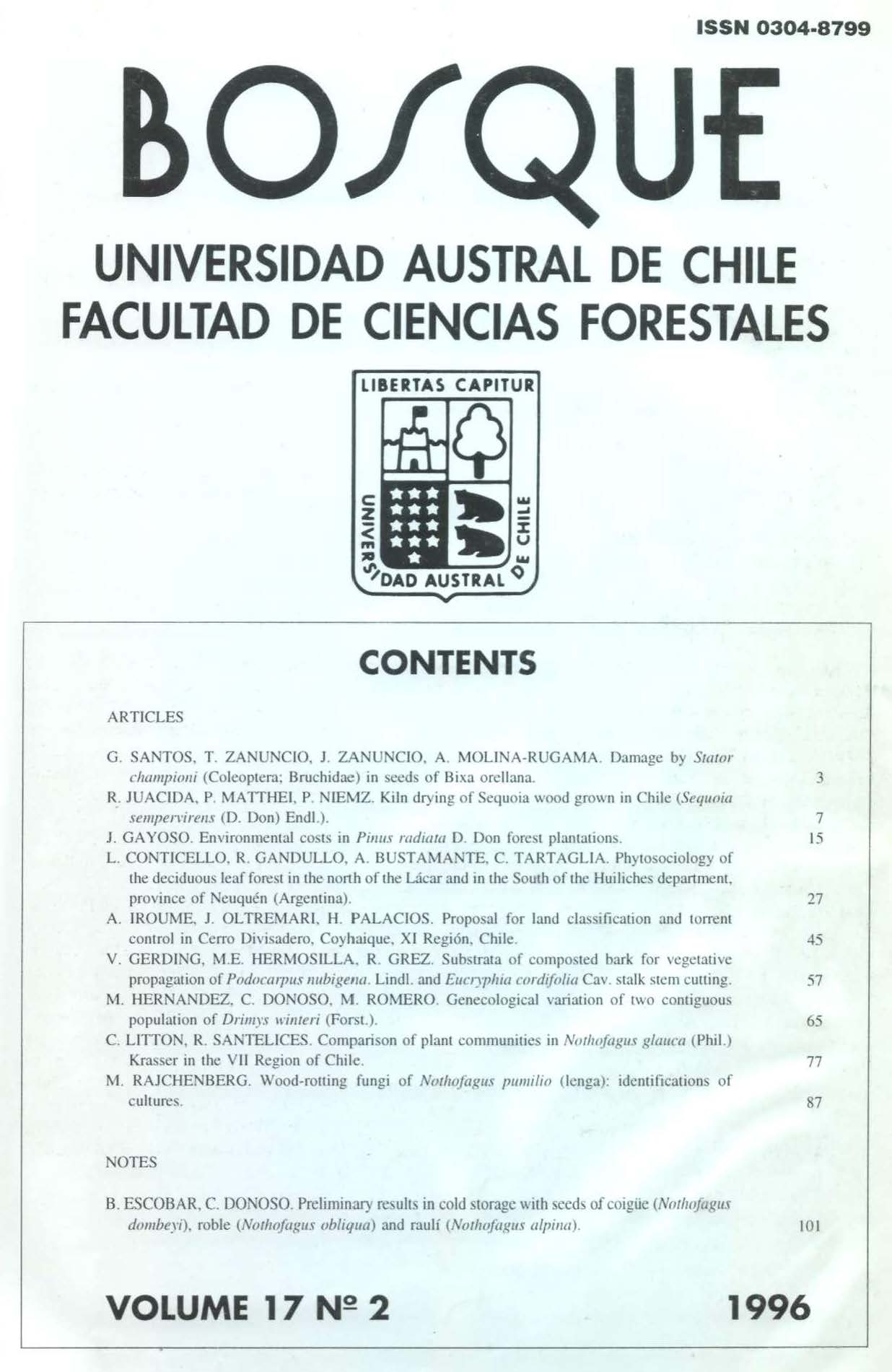Substrata of composted bark for vegetative propagation of Podocarpus nubigena Lindl, and Eucryphia cordifolia Cav. stalk stem cutting
Main Article Content
Abstract
The possibility of using composted bark of native trees, alone or in combination with fresh bark, with sawdust, with pumice, and with volcanic ash soil, as substratum for vegetative propagation of Podocarpus nubigena and Eurcryphia cordifolia stalk stem cutting was studied. Greenhouse conditions with microsprinkling watering was used for the study. After four months, the evaluation criterion used was: percentage of living stem cuttings, percentage of rooting, rooting degree, number of roots per plant, main root length, number of new sprouts, and length of new sprouts. For P. nubigena, all substrata were good (93-100% living stem cuttings), but with great rooting variation (20-87%). For E. cordifolia, the rooting was significantly affected (P < 0.05) by the type of complementary substance of the composted bark, but not for the proportion in which both of them participated. The best results were obtained with mixes containing mineral substances (soil, pumice). The conclusion is that the composted bark of native species is an alternative component to form substrata for the rooting of stalk stem cuttings. Some more sensitive species need to select the type of material which the composed bark can be mixed with.

